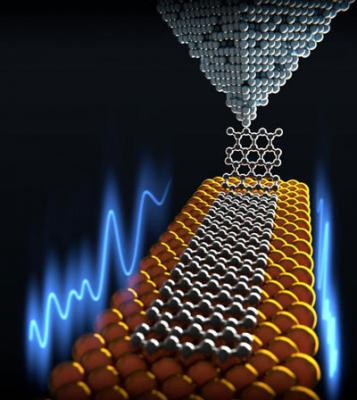Graphene's lubricity to enable frictionless coatings
An international collaboration of scientists from the University of Basel and the Swiss Empa have studied the above-average lubricity of graphene using a two-pronged approach combining experimentation and computation. The researchers state that the results of this study help them to better understand the manipulation of chemicals at the nano level and pave the way for creating frictionless coatings.

To do this, they anchored 2D strips of carbon atoms (graphene nanoribbons) to a sharp tip and dragged them across a gold surface. Computer-based calculations were used to investigate the interactions between the surfaces as they moved across one another. Using this approach, the research team hoped to gain a better understanding of the causes of superlubricity.





